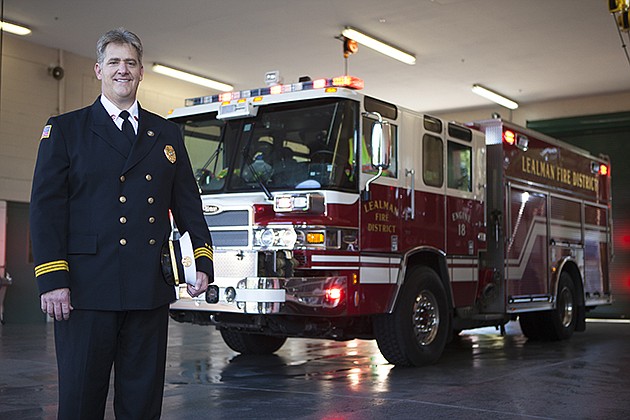- November 24, 2024
-
-
Loading

Loading

Laid back and somewhat shy, problems came quickly for Randy Keirn after his first promotion inside a Pinellas County fire department.
This was in 1987, when Keirn, then in his early 20s, was younger than most of the men in his unit. Full of technical firefighting knowledge, Keirn was determined to show everyone how it's done. Only he buckled at conflict, he recalls, and fumbled away opportunities to lead by example. A month into the gig, he was called into his supervisor's office, convinced he was going to be demoted — a fate he avoided.
“I was micromanaging because I didn't know any better,” says Keirn. “I thought that's what we are supposed to do.”
After staving off demotion, Keirn started to take leadership classes. He traveled a week every month to Ocala for specialized firefighter conflict leadership classes. “I really wanted to be better,” he says. “I obsessed about it.”
That obsession has turned into a unique dual career: Keirn, now 50, is a district chief for the Lealman Fire District in Pinellas County. He also runs a leadership development and conflict management training company, Fully Involved Consulting. At the fire department he oversees a crew of firefighters and EMS personnel, working a full-time rotation of 10, 24-hour shifts a month. At Fully Involved he flies nationwide, occasionally globally, where's he trained dozens of senior executives on leadership and conflict resolution. Companies he's worked for
include Harley-Davidson and St. Petersburg-based Jabil Circuit.
Keirn started working with Harley-Davidson in 2010. The company hired Keirn and a leadership coach he works with, Carolyn Quintin of St. Petersburg-based Quintin and Associates, to work with plant and factory leaders, in addition to many senior executives based in the corporate offices. One of their main tasks was to work with executives who had been doing things one way until the recession, and then had to change. That created tension and conflict. Keirn and Quintin worked with more than 15 senior officials in four plants over three years, including a trip to Australia. Says Keirn: “We really changed the culture of that organization.”
Cross Fire
When Randy Keirn wrote the book, “Taking the Heat Out of Conflict: A conflict resolution guide for fire officers,” his target audience was clear. But his five points of conflict resolution, under the acronym CROSSFire, could resonate with leaders in any field. Here's an overview of the process.
Conflict: Approach the individual with positive nonverbal cues. Walk in with a positive attitude that suggests “I'm curious, open to finding out what happened, and will amicably resolve this,” writes Keirn. Don't cross arms and give off negative body signals.
Reflect: Engage in active listening. Reflect back on what the person says. Repeat back a summary of what he or she said, Keirn writes, to clearly show “you understand their point of view.”
Objectives: This part of the process, says Keirn, revolves around “the expectations of what the improved behavior is going to look like.” Eliminate words such as don't, never and can't.
Solution: This resolves the conflict and moves the situation forward. In many cases, says Keirn, the most sustainable solution involves setting up consequences to curb the desired behavior. “Consequences affect behavior, especially when they are immediate and certain,” Keirn writes. “Immediate certain consequences — negative and positive — will change behaviors.”
Scribe: Write down each step in the process, especially the expectations. While some employees might frown when they see it in writing, Keirn says it will protect both sides and help avoid surprises.
— Mark Gordon